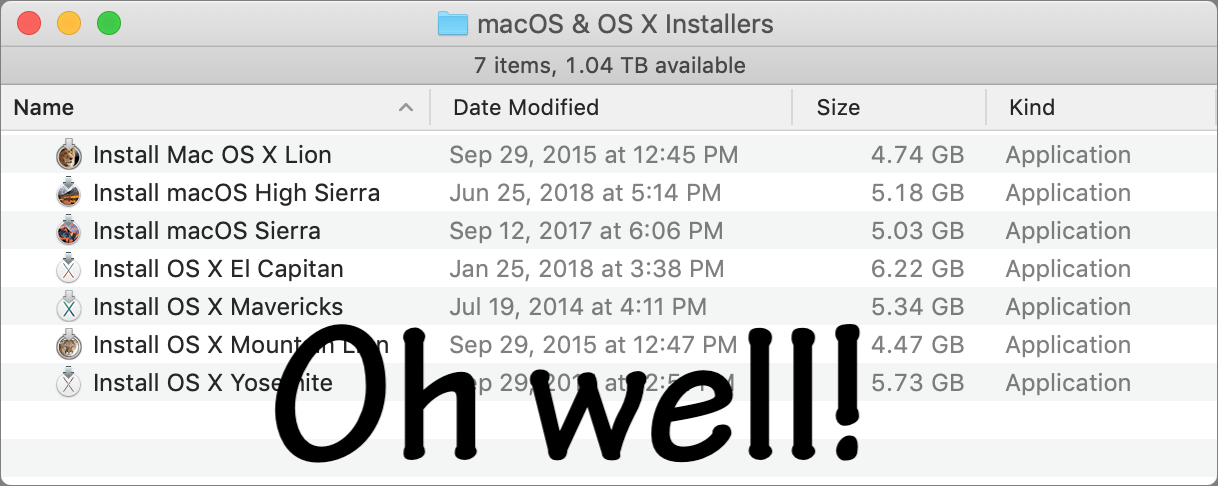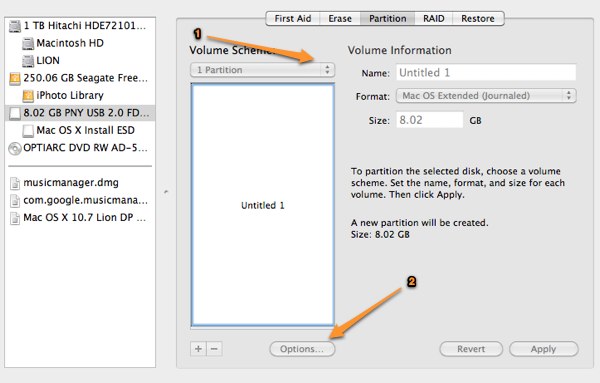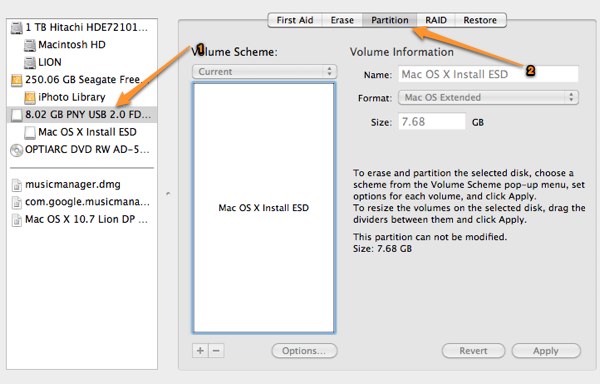This section covers the installation of the PaperCutUser ClientThe User Client tool is an add-on that resides on a user's desktop. It allows users to view their current account balance via a popup window, provides users with the opportunity to confirm what they are about to print, allows users to select shared accounts via a popup, if administrators have granted access to this feature, and displays system messages, such as the 'low credit' warning message or print policy popups. on Apple Mac systems. Before installing the client software, review Mac printing in detail and first ensure printing is working as expected.
The PaperCut Mac User Client software is a supplied as a native Mac .app package. The User Client is delivered in two flavors:
The current client, which supports Mac OS X 10.7 (Mountain Lion) and above.
The legacy client, which supports Mac OS X versions from 10.4 to 10.6. It is a universal application that runs on both PowerPC and Intel hardware. The legacy client will not receive future feature enhancements.
Apple has switched to a yearly release cycle for Mac OS X, which means it is difficult to keep this documentation up to date. For the most recent and up-to-date information on current best practices, see the Knowledge Base.
How to Install Mac OS X El Capitan on PC? How to Install Mac OS X El Capitan on PC Using UniBeast? Installing Mac OS X El Capitan on VirtualBox is somehow tricky, so read the article very carefully. If you make a mistake, so you will not be able to install Mac OS X El Capitan on VirtualBox. Tutorials: How to Clean Install Mac OS using a USB drive on Mac On June 6, 2011, at the Apple Worldwide Developers Conference, it was reported that the official discharge for Lion would be in July 2011.

The 'System Type' of your copy of Windows needs to be 64-bit, because OS X Mountain Lion is a 64-bit operating system. If you have a 32-bit copy of Windows, you can only install Mac OS X Snow Leopard on Virtualbox. For example, to get an installer for Lion, you may ask a friend who has Lion-operated Mac or, once again, set up a virtual machine running Lion. Then you will need to prepare an external drive to download the installation file using OS X Utilities.
For Mac OS X 10.7 and later
Utilizing LaunchAgent:
For Macs running 10.7, 10.8, 10.9, 10.10, 10.11, and later, the best way to establish set launch behavior patterns for the PCClient.app is to use LaunchAgents managed by LaunchD. For more information, see http://www.papercut.com/kb/Main/MacClientStartupWithLaunchd.
For legacy Mac OS X (10.6 and earlier) solutions:
For Macintosh computers running versions of Mac OS older than 10.7, the following three common installation methods cover most situations. The instructions for the 'single user install' follow the standard Mac application installation process and can be conducted by any Mac end user. The other installation methods are more technically focused and aimed at Mac network administrators.
Special Notes for Mac OS X 10.6 and earlier
NOTE'>NOTEThe current version of the PaperCut client does not work on Mac OS X 10.6 and earlier. For these systems the legacy client must be used. If the client fails to start, ensure you are using the correct client for your system.
The legacy client is found in [app-path]/client/legacy. Use this path to locate the client when referenced in the following sections.
The legacy client software works best if Java 5 (or higher) is installed. Java 5 is available for OS X 10.4 or above. If Java is not already installed, the installer is available from the Apple website. This simplest way to install Java is to run /Applications/Utilities/Java Preferences from OS X Finder, and you are prompted to complete the installation.
Single user install
This method is suitable for a Mac computer used by a single user. For example, a personal Mac desktop or laptop. The installation process involves clicking the client-local-install program. This copies the PCClient application into the over to the system's Applications folder and starts the client in the 'confirm network identity' mode. The simplest way to run the install process is to connect to a Windows server's pcclient share over the network, however, alternate methods such as copying the folder contents via a USB key or drive are also possible.
To install the Mac User Client from a server's share:
Start and Log in to the Mac computer. Ensure it's connected to the network.
Open the Finder.
In the Go menu, select Connect to Server.
Enter the pcclient share's connection details, such as: smb://server_name/pcclient.
Enter password information if requested.
Double-click the client-local-install file. This executes a small AppleScript program that starts the install/copy process. (If installing on a legacy system (OS X 10.6 or earlier), you must install the legacy client located in the legacy folder.)
Test the application by double-clicking the PCClient application icon in the system's local Applications folder.
If the user needs the User Client for printing (for example, to use the shared accountA shared account is an account that is shared by multiple users. For example, in business, shared accounts can be used to track printing costs by business unit, project, or client. Organizations like legal firms, engineering firms, or accounting offices often have long lists of accounts, projects, clients, or matters. In a school or university, shared accounts can be used to track printing by departments, classes, or subjects. popup), configure the application to automatically open upon start up:
Open System Preference from the Apple menu.
Select Accounts.
Select your login account.
Click the Login Items tab.
Click + then browse and select the PCClient application.
Test by restarting the computer. The client should start automatically after the reboot and log in procedure is complete.
Multi-user install
On a multi-user Mac system, setting up a Login Item for each user would be a tedious task. To streamline this process, you can configure the PCClient application to start on login via the login hook. A login hook is an advanced Mac feature that works by running a script when a user logs in. The PCClient package includes a command script resource that installs the login hook.
To install the User Client on a multi-user system:
Start and log in to the Mac computer.
Ensure the Mac computer is connected to the network.
Open the Finder.
From the Go menu, select Connect to Server
Enter the pcclient share's connection details, for example, smb://server_name/pcclient
Enter password information if requested.
Drag the PCClient (or legacy/PCClient on OS X 10.6 or lower) package to the local hard disk's Applications folder. The copy process begins.
In the Applications directory, Control+click the newly copied PCClient application.
Select Open Package Contents.
Navigate to Contents/Resources/.
Double-click the install-login-hook.command script.
Restart the system and verify the client starts on login.
If you're already using a login hook for other script tasks, the setup process is different. Instead in step 10, double-click the set-permissions.command file. Then insert the following line at the end of your current login script (all on one line):
/Applications/PCClient.app/Contents/Resources/login-hook-start '$1'
The set-permissions.command script ensures the software is set up with the correct permissions, making it accessible to all users.
You can remove the login hook, once installed, with the terminal command:
sudo defaults delete com.apple.loginwindow LoginHook
Zero-install deployment
This deployment method is for advanced Mac network administrators and is suitable for medium to large Mac networks. Knowledge of the Mac's Unix underpinning and scripting is required.
A more flexible option over locally installing the PCClient package on each Mac system, is to directly launch the client from the pcclient share. The advantage of this deployment method is that any updates applied on the server (and updates to the client directory) are automatically propagated to all workstations.


The process of setting up zero-install deployment varies from network to network depending on the directory environment in use and administrator preferences. The process can, however, be summarized as:
Configure the Macs to mount the pcclient share as a volume on login or start-up.
Configure a login hook to start the client off the share. The install-login-hook.command resource script explained in the multi-user install above might help.
The typical way to mount the share is to use mount_smbfs in a boot script. See the Apple documentation on mount_smbfs at: http://developer.apple.com/documentation/Darwin/Reference/ManPages/man8/mount_smbfs.8.html
Further information on Mac printing is available at Mac printing in detail.
So, you’ve decided to download an older version of Mac OS X. There are many reasons that could point you to this radical decision. To begin with, some of your apps may not be working properly (or simply crash) on newer operating systems. Also, you may have noticed your Mac’s performance went down right after the last update. Finally, if you want to run a parallel copy of Mac OS X on a virtual machine, you too will need a working installation file of an older Mac OS X. Further down we’ll explain where to get one and what problems you may face down the road.
A list of all Mac OS X versions
We’ll be repeatedly referring to these Apple OS versions below, so it’s good to know the basic macOS timeline.
| Cheetah 10.0 | Puma 10.1 | Jaguar 10.2 |
| Panther 10.3 | Tiger 10.4 | Leopard 10.5 |
| Snow Leopard 10.6 | Lion 10.7 | Mountain Lion 10.8 |
| Mavericks 10.9 | Yosemite 10.10 | El Capitan 10.11 |
| Sierra 10.12 | High Sierra 10.13 | Mojave 10.14 |
| Catalina 10.15 |
STEP 1. Prepare your Mac for installation
Given your Mac isn’t new and is filled with data, you will probably need enough free space on your Mac. This includes not just space for the OS itself but also space for other applications and your user data. One more argument is that the free space on your disk translates into virtual memory so your apps have “fuel” to operate on. The chart below tells you how much free space is needed.
Note, that it is recommended that you install OS on a clean drive. Next, you will need enough disk space available, for example, to create Recovery Partition. Here are some ideas to free up space on your drive:
- Uninstall large unused apps
- Empty Trash Bin and Downloads
- Locate the biggest files on your computer:
Go to Finder > All My Files > Arrange by size
Then you can move your space hoggers onto an external drive or a cloud storage.
If you aren’t comfortable with cleaning the Mac manually, there are some nice automatic “room cleaners”. Our favorite is CleanMyMac as it’s most simple to use of all. It deletes system junk, old broken apps, and the rest of hidden junk on your drive.
Download CleanMyMac for OS 10.4 - 10.8 (free version)
Download CleanMyMac for OS 10.9 (free version)
Download CleanMyMac for OS 10.10 - 10.14 (free version)
STEP 2. Get a copy of Mac OS X download
Normally, it is assumed that updating OS is a one-way road. That’s why going back to a past Apple OS version is problematic. The main challenge is to download the OS installation file itself, because your Mac may already be running a newer version. If you succeed in downloading the OS installation, your next step is to create a bootable USB or DVD and then reinstall the OS on your computer.
How to download older Mac OS X versions via the App Store
If you once had purchased an old version of Mac OS X from the App Store, open it and go to the Purchased tab. There you’ll find all the installers you can download. However, it doesn’t always work that way. The purchased section lists only those operating systems that you had downloaded in the past. But here is the path to check it:
- Click the App Store icon.
- Click Purchases in the top menu.
- Scroll down to find the preferred OS X version.
- Click Download.
This method allows you to download Mavericks and Yosemite by logging with your Apple ID — only if you previously downloaded them from the Mac App Store.
Install Mac Os X Lion From Usb
Without App Store: Download Mac OS version as Apple Developer
If you are signed with an Apple Developer account, you can get access to products that are no longer listed on the App Store. If you desperately need a lower OS X version build, consider creating a new Developer account among other options. The membership cost is $99/year and provides a bunch of perks unavailable to ordinary users.
Nevertheless, keep in mind that if you visit developer.apple.com/downloads, you can only find 10.3-10.6 OS X operating systems there. Newer versions are not available because starting Mac OS X Snow Leopard 10.7, the App Store has become the only source of updating Apple OS versions.
Purchase an older version of Mac operating system
You can purchase a boxed or email version of past Mac OS X directly from Apple. Both will cost you around $20. For the reason of being rather antiquated, Snow Leopard and earlier Apple versions can only be installed from DVD.
Buy a boxed edition of Snow Leopard 10.6
Get an email copy of Lion 10.7
Get an email copy of Mountain Lion 10.8
The email edition comes with a special download code you can use for the Mac App Store. Note, that to install the Lion or Mountain Lion, your Mac needs to be running Snow Leopard so you can install the newer OS on top of it.
How to get macOS El Capitan download
If you are wondering if you can run El Capitan on an older Mac, rejoice as it’s possible too. But before your Mac can run El Capitan it has to be updated to OS X 10.6.8. So, here are main steps you should take:
1. Install Snow Leopard from install DVD.
2. Update to 10.6.8 using Software Update.
3. Download El Capitan here.
“I can’t download an old version of Mac OS X”
If you have a newer Mac, there is no physical option to install Mac OS versions older than your current Mac model. For instance, if your MacBook was released in 2014, don’t expect it to run any OS released prior of that time, because older Apple OS versions simply do not include hardware drivers for your Mac.

But as it often happens, workarounds are possible. There is still a chance to download the installation file if you have an access to a Mac (or virtual machine) running that operating system. For example, to get an installer for Lion, you may ask a friend who has Lion-operated Mac or, once again, set up a virtual machine running Lion. Then you will need to prepare an external drive to download the installation file using OS X Utilities.
After you’ve completed the download, the installer should launch automatically, but you can click Cancel and copy the file you need. Below is the detailed instruction how to do it.
STEP 3. Install older OS X onto an external drive
The following method allows you to download Mac OS X Lion, Mountain Lion, and Mavericks.
- Start your Mac holding down Command + R.
- Prepare a clean external drive (at least 10 GB of storage).
- Within OS X Utilities, choose Reinstall OS X.
- Select external drive as a source.
- Enter your Apple ID.
Now the OS should start downloading automatically onto the external drive. After the download is complete, your Mac will prompt you to do a restart, but at this point, you should completely shut it down. Now that the installation file is “captured” onto your external drive, you can reinstall the OS, this time running the file on your Mac.
- Boot your Mac from your standard drive.
- Connect the external drive.
- Go to external drive > OS X Install Data.
Locate InstallESD.dmg disk image file — this is the file you need to reinstall Lion OS X. The same steps are valid for Mountain Lion and Mavericks.
How to downgrade a Mac running later macOS versions
If your Mac runs macOS Sierra 10.12 or macOS High Sierra 10.13, it is possible to revert it to the previous system if you are not satisfied with the experience. You can do it either with Time Machine or by creating a bootable USB or external drive.
Instruction to downgrade from macOS Sierra
Instruction to downgrade from macOS High Sierra
Instruction to downgrade from macOS Mojave
Instruction to downgrade from macOS Catalina
Clean Install Mac Os Lion Usb
Before you do it, the best advice is to back your Mac up so your most important files stay intact. In addition to that, it makes sense to clean up your Mac from old system junk files and application leftovers. The easiest way to do it is to run CleanMyMac X on your machine (download it for free here).

Visit your local Apple Store to download older OS X version
Install Mac Os X Lion From Usb
If none of the options to get older OS X worked, pay a visit to nearest local Apple Store. They should have image installations going back to OS Leopard and earlier. You can also ask their assistance to create a bootable USB drive with the installation file. So here you are. We hope this article has helped you to download an old version of Mac OS X. Below are a few more links you may find interesting.
